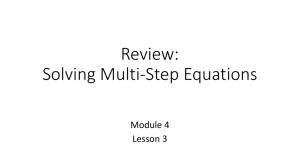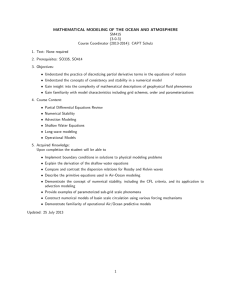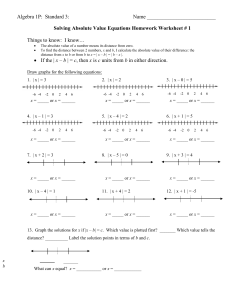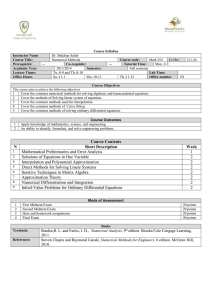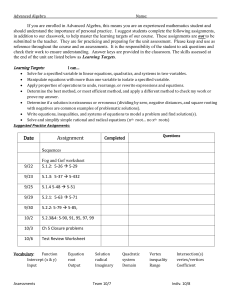Astronomy 101 Lab Report Format Guide
advertisement
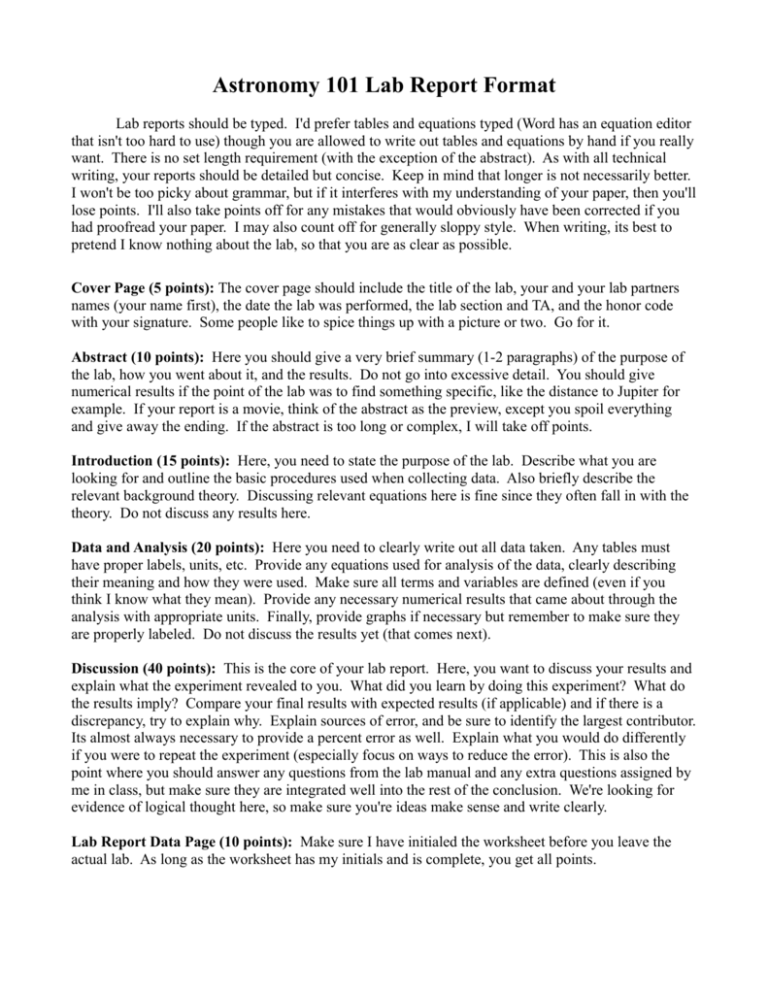
Astronomy 101 Lab Report Format Lab reports should be typed. I'd prefer tables and equations typed (Word has an equation editor that isn't too hard to use) though you are allowed to write out tables and equations by hand if you really want. There is no set length requirement (with the exception of the abstract). As with all technical writing, your reports should be detailed but concise. Keep in mind that longer is not necessarily better. I won't be too picky about grammar, but if it interferes with my understanding of your paper, then you'll lose points. I'll also take points off for any mistakes that would obviously have been corrected if you had proofread your paper. I may also count off for generally sloppy style. When writing, its best to pretend I know nothing about the lab, so that you are as clear as possible. Cover Page (5 points): The cover page should include the title of the lab, your and your lab partners names (your name first), the date the lab was performed, the lab section and TA, and the honor code with your signature. Some people like to spice things up with a picture or two. Go for it. Abstract (10 points): Here you should give a very brief summary (1-2 paragraphs) of the purpose of the lab, how you went about it, and the results. Do not go into excessive detail. You should give numerical results if the point of the lab was to find something specific, like the distance to Jupiter for example. If your report is a movie, think of the abstract as the preview, except you spoil everything and give away the ending. If the abstract is too long or complex, I will take off points. Introduction (15 points): Here, you need to state the purpose of the lab. Describe what you are looking for and outline the basic procedures used when collecting data. Also briefly describe the relevant background theory. Discussing relevant equations here is fine since they often fall in with the theory. Do not discuss any results here. Data and Analysis (20 points): Here you need to clearly write out all data taken. Any tables must have proper labels, units, etc. Provide any equations used for analysis of the data, clearly describing their meaning and how they were used. Make sure all terms and variables are defined (even if you think I know what they mean). Provide any necessary numerical results that came about through the analysis with appropriate units. Finally, provide graphs if necessary but remember to make sure they are properly labeled. Do not discuss the results yet (that comes next). Discussion (40 points): This is the core of your lab report. Here, you want to discuss your results and explain what the experiment revealed to you. What did you learn by doing this experiment? What do the results imply? Compare your final results with expected results (if applicable) and if there is a discrepancy, try to explain why. Explain sources of error, and be sure to identify the largest contributor. Its almost always necessary to provide a percent error as well. Explain what you would do differently if you were to repeat the experiment (especially focus on ways to reduce the error). This is also the point where you should answer any questions from the lab manual and any extra questions assigned by me in class, but make sure they are integrated well into the rest of the conclusion. We're looking for evidence of logical thought here, so make sure you're ideas make sense and write clearly. Lab Report Data Page (10 points): Make sure I have initialed the worksheet before you leave the actual lab. As long as the worksheet has my initials and is complete, you get all points.
